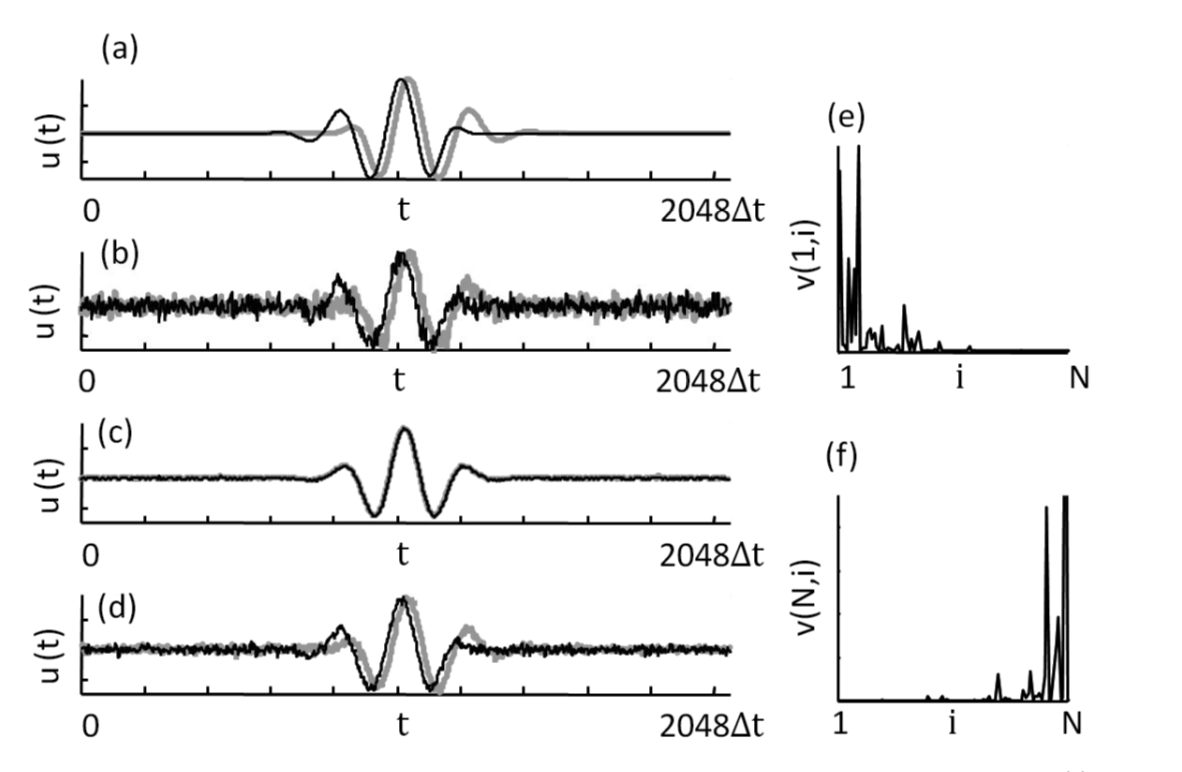Question #1: Can we employ image noise reduction techniques to seismic?

(a) The i = 1 (black) and i = N (grey) members of a set of N = 100 time series u(i)0 whose shapes evolve systematically with i. (b) The corresponding noisy time series u(i) (s.n.r.=3). (c) Reconstructed versions of (a) without weights fails to capture the systemic evolution. (d) Reconstructed versions of (a) with weights correctly captures the systemic evolution. (e)-(f) Weights v(1,i) and v(N,i), respectively, used to compute the reconstructions in (d). In order to emphasize the accuracy of the reconstruction, the target time series were omitted from their own reconstructions.
Title: Improved precision of delay times determined through cross correlation achieved by out-member averaging
Authors: W.H. Menke, H.P. Menke
Abstract: The estimation of differential time delays between similar but noisy time series by cross-correlation is an important component of many data processing applications. In many cases, delays are determined for every pair of time series drawn from a large set of them. For instance, modern earthquake location techniques utilize the differential delays between all P waves (or S waves) observed at a common station, sets that could have thousands of members (one for each earthquake pair). We show that the variance of delay time estimates can be reduced by a factor of 2 to 4 through a process we term out-member averaging. It utilizes an estimate of the delay time constructed by adding together the delays between each member of the pair and a third time series. In addition to decreasing the variance of the estimates, thus potentially improving the accuracy of earthquake locations by a factor of 2–4, it also demonstrates that data from an earthquake can contribute to the location process, even when insufficient data are available to locate that particular earthquake.
Authors: W.H. Menke, H.P. Menke
Abstract: The estimation of differential time delays between similar but noisy time series by cross-correlation is an important component of many data processing applications. In many cases, delays are determined for every pair of time series drawn from a large set of them. For instance, modern earthquake location techniques utilize the differential delays between all P waves (or S waves) observed at a common station, sets that could have thousands of members (one for each earthquake pair). We show that the variance of delay time estimates can be reduced by a factor of 2 to 4 through a process we term out-member averaging. It utilizes an estimate of the delay time constructed by adding together the delays between each member of the pair and a third time series. In addition to decreasing the variance of the estimates, thus potentially improving the accuracy of earthquake locations by a factor of 2–4, it also demonstrates that data from an earthquake can contribute to the location process, even when insufficient data are available to locate that particular earthquake.